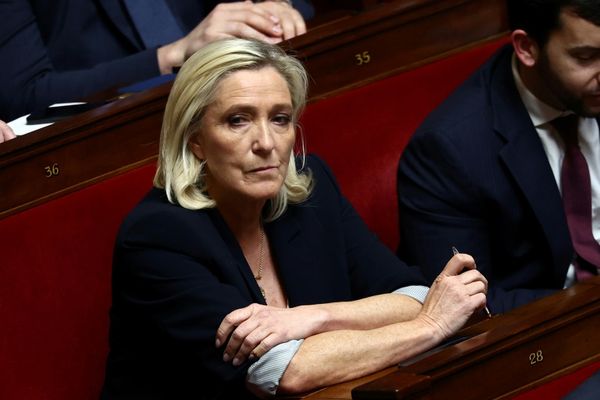
Iran disrupted internet access to the outside world as angry demonstrators rallied over the collapse of a tower in Iran that has killed at least 34 people, experts said Tuesday as outrage and grief continued to grow in the country.
The disruption has plunged the southwestern province into digital isolation, making it difficult for journalists to authenticate events on the ground and for activists to share footage and organize protests.
It's a tactic the Iranian government has repeatedly employed during times of unrest, rights activists say, in a country where radio and television stations already are state-controlled and journalists face the threat of arrest.
The internet interference in the oil-rich Khuzestan province started in early May, weeks before the fatal collapse, said Amir Rashidi, director of internet security and digital rights at Miaan Group, which focuses on digital security in the Middle East. The province was a flashpoint in protests over the sinking economy and skyrocketing prices of food staples.
Disruptions then intensified in the area after the Metropol Building collapse last week, according to data shared by the Miaan Group.
The disaster ignited widespread anger in Abadan, where residents alleging government negligence gathered nightly at the site of the collapse to shout slogans against the Islamic Republic. Videos of the protests have circulated widely online, with some showing officers clubbing and firing tear gas at demonstrators.
The footage analyzed by The Associated Press corresponded to known features of Abadan, some 660 kilometers (410 miles) southwest of the capital, Tehran. The number of casualties and arrests remains unclear.
In response to the protests, Iranian authorities at times completely shut down the internet and other times allowed only tightly controlled use of a domestic Intranet, reported the Miaan Group.
During the day, authorities also appear to have restricted bandwidths to make it very difficult for people to share large files, such as video, without leaving Abadan altogether, said Mahsa Alimardani, a senior researcher at Article 19, an international organization that fights censorship.
Last Friday, as massive crowds took to the streets to chant against top officials, a digital barricade of sorts went up between Iran and the world, data showed. Only certain government-approved national websites could stream content but not websites based abroad.
"There has been a pattern that we’ve seen when it gets dark where Google isn’t working but the website of the Supreme Leader is working well," Rashidi said.
The Iranian mission at the United Nations did not immediately respond to request for comment.
Meanwhile, rescue workers pulled another body from the rubble on Tuesday, bringing the death toll to 34 amid fears more people could be trapped in the ruins. Five of the victims were school-age children, the official IRNA news agency reported. Another 37 people were injured in the collapse, with two still hospitalized.
Officials have blamed the building’s structural failure on shoddy construction practices, lax regulation and entrenched corruption, raising questions about the safety of similar towers in the earthquake-prone country. Authorities reported they evacuated residents from buildings near the disaster site, fearing structural damage.
The rising political and economic pressures come as talks to restore Tehran's tattered nuclear deal with world powers have hit a deadlock. Hostilities have simmered as Iran accelerates its nuclear program far beyond the limits of the nuclear deal and last week seized two Greek tankers on a key oil route through the Gulf.
In a sign of those rising tensions, Iran's Foreign Ministry sharply criticized the International Atomic Energy Agency on Tuesday over its quarterly report released the day before on Iran's nuclear program.
Foreign Ministry spokesman Saeed Khatibzadeh rebuked the report's findings that Iran's highly enriched uranium stockpile had increased by 18 times since the 2015 nuclear deal as "not fair and balanced."
The UN nuclear watchdog also said that Iran has still failed to explain traces of uranium particles that IAEA inspectors found at former undeclared sites in the country - long a sore point between Iran and the agency despite a recent push for a resolution by June.
Khatibzadeh said the agency's statements "did not reflect the reality of talks between Iran and the agency."
"The agency should be watchful and not destroy the path we walked down, with difficulty," he told reporters in Tehran.
Iranian Foreign Minister Hossein Amirabdollahian also on Tuesday addressed indirect negotiations with the United States over the collapsed nuclear deal, telling reporters he communicated Iranian concerns to Vice President Kamala Harris through a third party when they were in Munich earlier this year.
Iran has repeatedly demanded guarantees that no future president could unilaterally abandon the agreement, as former President Donald Trump did in 2018. The White House has said it cannot make such a commitment.
Amirabdollahian said he had asked the mediator to "tell Ms. Kamala Harris if a group of rebels are going to take over the White House, could you please let us know."
"Even if rebels take over, they must be committed to international agreements,” Amirabdollahian said.
The White House has not acknowledged any such message.







